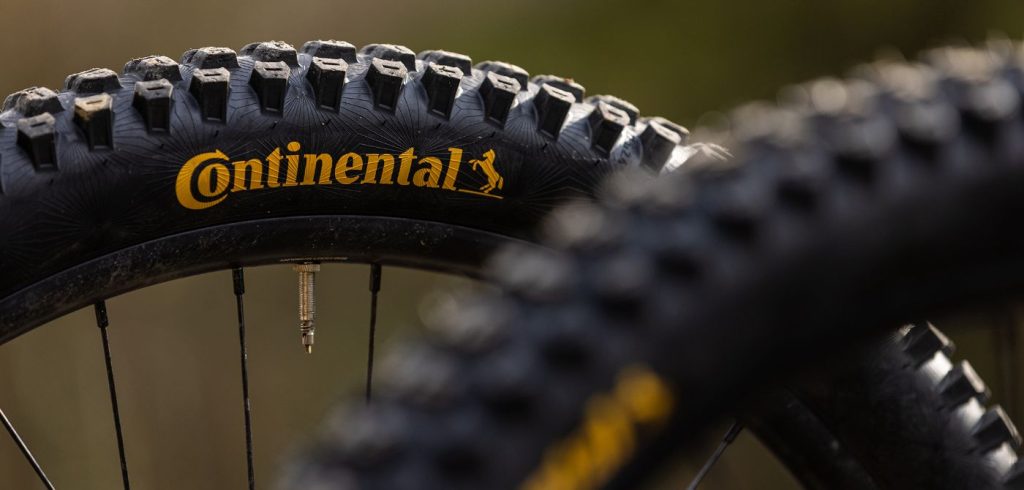The bicycle industry has increasingly embraced sustainability, and one of the most significant areas of innovation is the development of eco-friendly tires. With rising awareness about environmental issues and the impact of traditional tire production on the planet, consumers and manufacturers are now looking to reduce the carbon footprint of their cycling gear. However, while eco-friendly tires promise better environmental credentials, the question remains: do they provide the same level of performance as their conventional counterparts, particularly in terms of traction and durability? This article delves into the performance of sustainable tires, exploring their traction, durability, and overall usability in different terrains.
The Shift Towards Eco-Friendly Tires
Eco-friendly tires are manufactured with the environment in mind, prioritizing the use of sustainable materials, recycled content, and more eco-conscious production processes. Traditional tires, particularly those made from synthetic rubber, are known to have a significant environmental impact due to the extraction of petroleum-based materials and their non-biodegradability. In contrast, eco-friendly tires aim to reduce this impact by incorporating renewable resources such as natural rubber, recycled rubber, and biopolymers.
However, eco-friendly tires are more than just a response to environmental concerns. They are also designed to meet the performance demands of cyclists. These tires are often marketed as offering similar or even superior benefits compared to traditional tires, such as improved grip, longer lifespan, and reduced rolling resistance. The key question for cyclists, though, is whether these tires truly live up to these promises in real-world conditions.
Materials Behind Eco-Friendly Tires
The performance of eco-friendly tires largely depends on the materials used in their construction. Key materials used in sustainable tires include:
- Recycled Rubber: Many eco-friendly tires incorporate recycled rubber, sourced from discarded tires or industrial waste. Recycled rubber helps reduce the need for virgin rubber, lowering the overall environmental impact of tire production. It is important to note that the quality of recycled rubber can vary, which may affect the performance of the tire in terms of traction and durability.
- Natural Rubber: Natural rubber is a key alternative to synthetic rubber, which is often derived from petroleum-based products. Sustainable tires made with natural rubber offer a renewable and biodegradable option. Rubber sourced from responsible plantations can reduce the carbon footprint of tire manufacturing, while maintaining the desirable elasticity and traction that cyclists require.
- Biodegradable Materials: Some manufacturers are experimenting with biopolymers derived from plant-based materials, such as corn or soy. These materials are designed to break down more easily at the end of the tire’s life cycle, reducing landfill waste.
- Recycled Steel: The steel wire used in many bike tires is often made from recycled materials, further reducing the environmental impact of the tire’s production. Recycled steel is just as strong and reliable as virgin steel, ensuring that the tire maintains structural integrity and performance.
- Sustainable Manufacturing Processes: Beyond materials, the production process also plays a critical role in a tire’s sustainability. Eco-friendly tire manufacturers often adopt more energy-efficient manufacturing processes, minimize the use of harmful chemicals, and optimize waste reduction.
While these materials all contribute to the sustainability of the tires, it is crucial to assess whether they impact the performance aspects of traction, durability, and handling in various conditions.
Traction: How Well Do Eco-Friendly Tires Grip the Road?
Traction is one of the most critical factors when it comes to cycling performance. Whether riding on city streets, gravel paths, or muddy trails, cyclists need tires that can provide consistent grip to ensure safety and efficiency.
1. Performance on Pavement
For cyclists who primarily ride on paved roads, eco-friendly tires can deliver comparable traction to traditional tires. Many eco-friendly tires use high-quality natural rubber, which is known for its excellent grip on both dry and wet surfaces. Tires made with a combination of natural rubber and synthetic polymers often offer the best of both worlds: the durability and elasticity of natural rubber with the wear resistance of synthetic materials.
Eco-friendly tires are typically designed with specific tread patterns to enhance grip. Road cycling tires, for example, often feature slick or minimally textured treads for reduced rolling resistance and smooth handling on paved surfaces. When tested against conventional tires, eco-friendly options have shown to perform similarly, with no significant difference in grip or handling on dry or wet roads.
2. Traction on Gravel and Mixed Terrain
For cyclists who ride on gravel or mixed terrain, eco-friendly tires designed with broader treads and larger knobby patterns have proven to offer excellent traction. Recycled rubber compounds and natural rubber blends are often used in these tires to provide optimal grip on loose or uneven surfaces, such as dirt paths or gravel roads. Tires with wider profiles and more aggressive tread patterns can maintain a strong connection with the surface, enhancing stability and control.
The use of recycled rubber in off-road tires has been found to provide good traction, although some performance drawbacks may arise in more extreme conditions. In particularly challenging environments, such as wet and slippery gravel, eco-friendly tires may not offer the same level of grip as traditional high-performance tires, but the difference is often minimal.
3. Mud and Slippery Conditions
When it comes to riding in muddy or slippery conditions, eco-friendly tires may experience slightly reduced traction compared to their traditional counterparts. Traditional tires designed for off-road conditions often incorporate specific synthetic compounds that enhance grip in wet and muddy environments. These compounds, while effective in performance, contribute to a higher environmental footprint.
Eco-friendly tires that are made from natural rubber and recycled materials may not offer the same level of wet weather traction as premium synthetic options, although advances in tire technology have reduced this gap. Many sustainable tire manufacturers are working to improve performance in wet conditions by refining rubber compounds and tread patterns.

Durability: Can Eco-Friendly Tires Last as Long as Conventional Ones?
Durability is another crucial consideration when evaluating tires, particularly for cyclists who log a lot of miles or ride in demanding conditions. A tire that wears out quickly not only becomes a financial burden but also contributes to waste, making it less sustainable in the long run.
1. Wear Resistance of Sustainable Tires
Eco-friendly tires are generally quite durable, especially when made from high-quality natural rubber and recycled compounds. These materials have shown to offer similar wear resistance to traditional tires, meaning that they are able to handle the constant friction and pressure of regular cycling without significant degradation. Tires made from natural rubber are also more resistant to UV degradation compared to synthetic rubber, helping them last longer in sunlight.
However, the durability of eco-friendly tires can vary depending on the specific materials used. Tires made primarily from recycled rubber may exhibit slightly less wear resistance than those made from a blend of natural and synthetic materials. This can result in faster wear, particularly when used on rough or abrasive surfaces. Yet, the overall difference in durability is often marginal when compared to conventional tires.
2. Tire Lifespan Across Various Conditions
In everyday riding conditions, eco-friendly tires perform well over time. The tires tend to last for several thousand miles before noticeable signs of wear appear. However, under extreme conditions, such as intense off-roading or heavy-duty cycling, eco-friendly tires may not last as long as traditional tires with a more robust synthetic composition. That said, their lifespan can still be considered competitive, particularly if the cyclist prioritizes environmental benefits alongside durability.
One important factor contributing to the durability of eco-friendly tires is their ability to be reprocessed at the end of their lifespan. Manufacturers are increasingly focusing on creating tires that can be recycled, reducing the overall environmental impact of the tire throughout its life cycle.
Real-World Testing: Sustainable Tires in Action
To truly evaluate whether eco-friendly tires meet the demands of cyclists, real-world testing is essential. Leading cycling brands and independent testers have conducted numerous trials to assess the performance of sustainable tires in a variety of conditions. In these tests, eco-friendly tires have shown that they provide similar traction and durability to traditional tires, with only minor differences in extreme conditions.
For example, one test conducted by a prominent cycling brand found that eco-friendly tires performed excellently on paved roads and gravel paths. The tires exhibited reliable grip, smooth handling, and resistance to wear. In more challenging conditions, such as wet gravel or muddy trails, eco-friendly tires showed slightly less traction but still provided satisfactory performance.
Conclusion: The Future of Eco-Friendly Tires
Eco-friendly tires are certainly a viable option for many cyclists, offering comparable traction and durability to conventional tires in most conditions. While they may not always outperform traditional tires in extreme conditions, the gap in performance is closing as manufacturers continue to innovate with sustainable materials and manufacturing processes.
For cyclists looking to reduce their environmental footprint without sacrificing performance, eco-friendly tires offer an excellent balance of sustainability and reliability. As the technology continues to improve, these tires will only get better, providing a compelling option for cyclists committed to sustainability.





































Discussion about this post